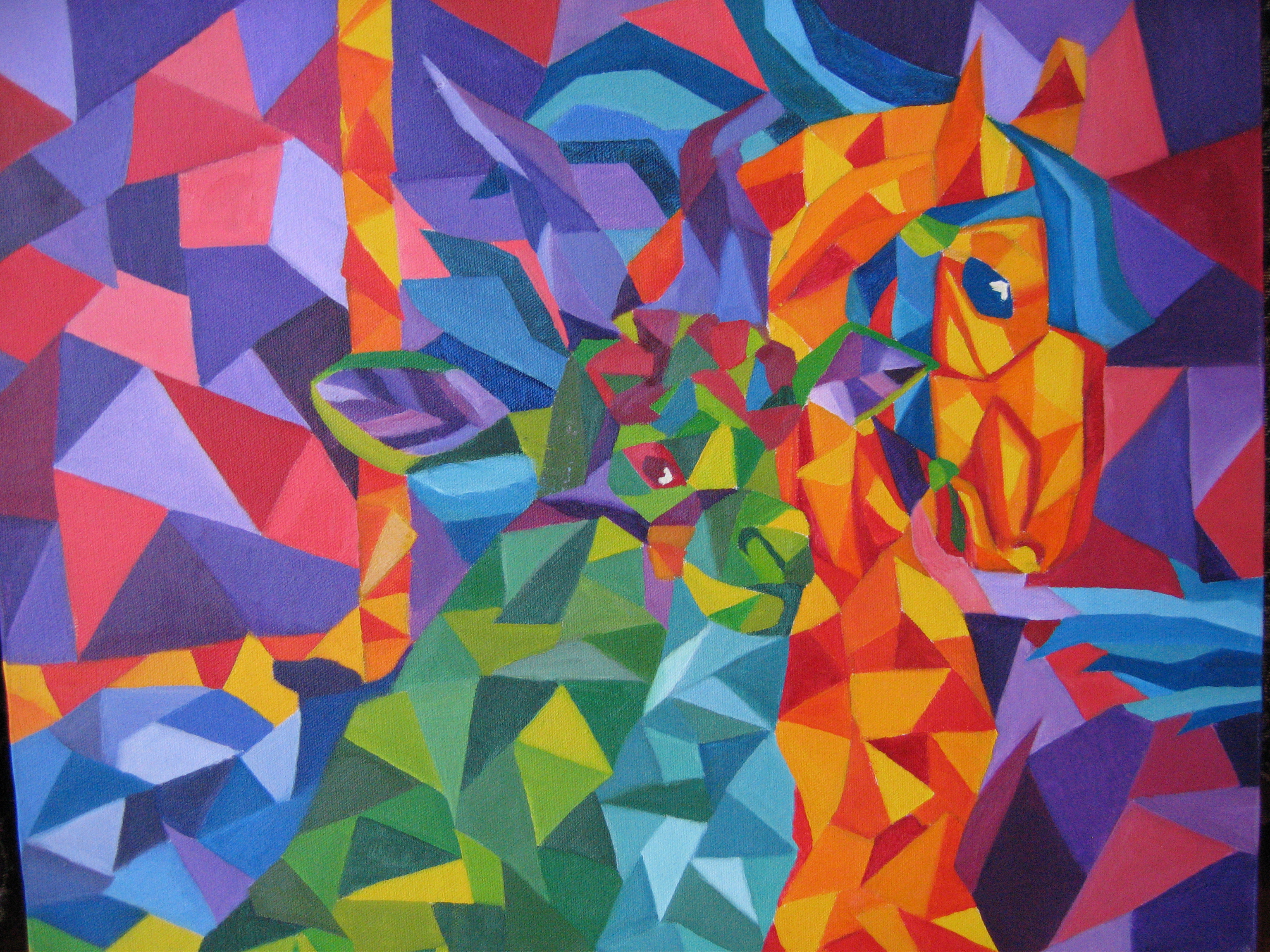

The group’s art can be viewed as a reaction against the conceptual and non-humanitarian approach of Picasso, Braque, and Gris. This became evident in 1911, with the occurrence of the so-called Puteaux Group (1911–13) of Cubist artists, including Alexander Archipenko, Gleizes, Metzinger, Frank Kupka, Marcel Ducham, and Léger, who frequented the studios of Jacques and Raymond Duchamp-Villon. In fact, the style was never homogenous but raised controversy among its agents. In addition to the emphasis on solid geometry, their vivid color palette replaced the proto-Cubist perpetual use of greys, browns, and blacks and opposed its simplified geometrical surfaces that are divided into plastic planes viewed from different angles and result in the conceptual perspective of early Cubism (La Fresnaye, The Conquest of the Air, 1913). This variation mainly resides in the perceptual, either quasi-figurative (Lhote, L'Escale, 1913) or purely abstract Cubist perspective that several artists brought forward (Delaunay, Fenêtres ouvertes simultanément, 1912).

However, it expanded and evolved rapidly in Paris so that a large number of Cubist-influenced styles emerged that differ substantially from that of Picasso and Braque. Digital image, The Museum of Modern Art, New York/Scala, Florence.Ĭubism gained worldwide recognition from the second decade of the twentieth century onwards. Source: New York, Museum of Modern Art (MoMA). Its influence was not limited to painting and sculpture but extended to architecture, poetry, music, literature, and the applied arts.Ī revised and expanded version of this article is available here. Alternative Cubist perspectives were also introduced by painters such as Jean Metzinger, Albert Gleizes, Henri Le Fauconnier, Roger de La Fresnaye, and André Lhote and sculptors such as Jacques Lipchitz and Henri Laurens. However, artists such as Fernand Léger ( Les fumeurs, 1912), Juan Gris ( Grapes, 1913), and Robert Delaunay ( Windows, 1912) developed their own distinctive styles, pushing forward the color perspectives, the shifting geometrical elements and the non-objective approach (Léger, Contraste de formes, 1913) of the Cubist synthesis. Picasso’s Les Demoiselles d’Avignon (1907) and Braque’s Maisons à l’Estaque (1908) are considered to be the first manifestations of proto-Cubist painting. Cubist art was largely influenced by the late work of Paul Cézanne and the study of primitive art and, more precisely, African religious masks, statuettes, and artefacts. The dull and monochromatic palette (Picasso, Still Life with a Bottle of Rum, 1911) of early Cubist painting, in addition to its emphasis on geometry, can be alternatively viewed as a reaction against the pure bright colors of the Fauves and the spontaneous color treatment of the Impressionists. Cubism signals the break with Renaissance tradition through the rejection of three-dimensional illusionist composition. Subsequently, it soon became a commonplace term and was widely used to describe the formalist innovations in painting pioneered by Pablo Picasso and Georges Braque from 1907 to 1914.

The term was established by Parisian art critics, derived from Louis Vauxcelles, and possibly Henri Matisse’s description of Braque’s reductive style in paintings of 1908. Cubism is an influential modernist art movement that emerged in Paris during the first decade of the twentieth century.


 0 kommentar(er)
0 kommentar(er)
